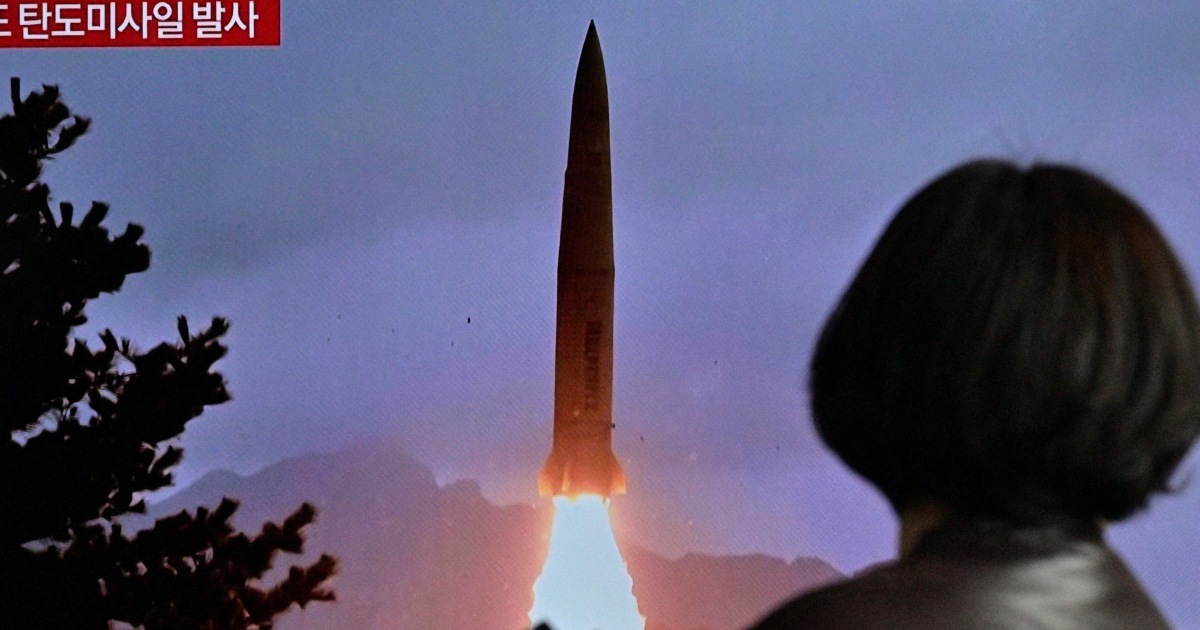North Korea launched a short-range ballistic missile into the sea on Sunday, its neighbors said, ramping up test activities in response to ongoing US and South Korean military exercises that it sees as an invasion rehearsal.
North Korea’s continuation of missile tests showed its determination not to back down, despite the US and South Korean exercises, which are the largest of their kind in years. But many experts say the tests are also part of North Korea’s larger goal of expanding its weapons arsenal, gaining international recognition as a nuclear state and lifting international sanctions.
The missile launched from North Korea’s northwestern Tongchangri area flew across the country before landing in the waters off its east coast, according to assessments by South Korea and Japan. They said the missile traveled a distance of about 500 miles, a range that suggests the weapon could be targeted at South Korea.
Top nuclear envoys from South Korea, Japan and the US discussed the launch over the phone and strongly condemned it as a provocation that threatens peace on the Korean peninsula and in the region. They agreed to strengthen their coordination to issue a firm international response to the North’s action, according to the Seoul Ministry of Foreign Affairs.
The South Korean military said it will proceed with the rest of the joint drills with the US and will stand ready to respond «overwhelmingly» to any North Korean provocation. As part of the drills, the United States on Sunday flew at least one long-range B-1B bomber for joint aerial training with South Korean fighter jets, according to the South Korean Defense Ministry.
North Korea is very sensitive to the deployment of B-1Bs, which are capable of carrying a huge payload of conventional weapons. It responded to the February B-1B flights by launching test missiles, the ranges of which showed they can hit some military airbases in South Korea.
Japanese Vice Defense Minister Toshiro Ino said the missile landed outside Japan’s exclusive economic zone and there were no reports of damage to ships or aircraft in the area. He said the missile likely showed an irregular trajectory, a possible reference to North Korea’s highly maneuverable and nuclear-capable KN-23 missile that was modeled after Russia’s Iskander missile.
The US Indo-Pacific Command said the latest launch does not pose an immediate threat to US homeland or its allies. But he said North Korea’s recent releases highlight «the destabilizing impact of its illegal weapons programs» and that the US security commitment to South Korea and Japan remains «iron.»
The launch was the third round of weapons tests by the North since the US and South Korean militaries began their joint military exercises on Monday. The drills, which include computer simulations and field exercises, will continue through Thursday. The field exercises are the largest of their kind since 2018.
Weapons that North Korea recently tested include its longer-range Hwasong-17 intercontinental ballistic missile designed to strike the continental United States. North Korean state media quoted leader Kim Jong Un as saying the launch of the intercontinental ballistic missile was meant to «instill fear in enemies.»
North Korea has missiles that put Japan within striking distance. Last October, North Korea fired an intermediate-range missile over northern Japan, forcing local communities to issue evacuation alerts and stop trains.
After the launch on Sunday, Japan’s Prime Minister Fumio Kishida ordered a swift response, including close collaboration with South Korea and the US, according to Ino, the Japanese vice defense minister.
A day before the start of the exercises, North Korea also fired cruise missiles from a submarine. North Korea’s state media said the submarine-launched missile was a demonstration of its determination to respond with «overwhelmingly powerful» force to increasingly intense military maneuvers by «US imperialists and North Korean puppet forces.» South».

